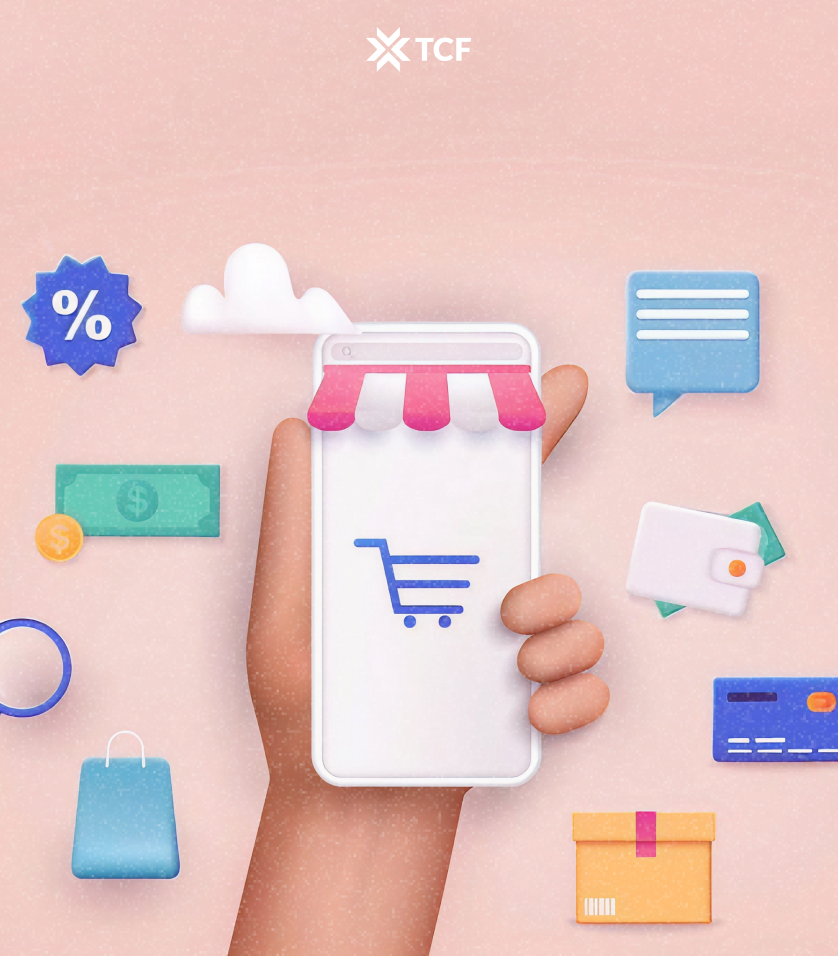Your product detail page is where the magic’s supposed to happen. It’s the last stop before the buy button, the moment your product either convinces someone to click “Add to Cart” or quietly gets ghosted for a competitor.
If you’re reading this, there’s a good chance you’ve already done the obvious stuff. You’ve got solid photos, a buy button in the right spot, and maybe even a few reviews sprinkled in. But conversions? Still kinda meh.
The truth is, great PDPs aren’t built by accident. And they’re definitely not built by blindly copying Amazon or installing your 14th “conversion booster” app.
This guide is here to help you figure out what actually works. We’ll break down what high-performing product pages are doing differently from layout and copy to trust signals, mobile UX, and all the little tweaks that add up to big results. I promise, you’ll walk away with clear, useful takeaways you can apply today.
[[cta5]]
Quick Wins Checklist to Improve Your Product Detail Page Without a Full Redesign
Short on time? Not ready to rebuild your entire PDP from scratch? Start here. These are the low-effort, high-impact updates that can seriously lift conversions without needing a full redesign or begging your dev team for favors.
☐ Place the Add to Cart button above the fold on all devices
☐ Use a clear, keyword-rich product title that describes the item
☐ Add at least 5 high-quality images, including lifestyle and close-ups
☐ Display star ratings and number of reviews near the product title
☐ Show price, variant options, and shipping info immediately
☐ Format your description with bullet points and bolded benefits
☐ Add a visible “30-day free returns” or similar policy near the CTA
Key Elements of a High-Converting PDP
Good product pages don’t just “look nice.” They answer questions, remove doubt, and make buying feel like the obvious next step. Here’s what separates a solid PDP from one that actually converts.
1. Visual Hierarchy and Media That Sell
Shoppers don’t read product pages. They glance, scroll, and bounce the moment something feels off. Your job? Guide their eyes and earn their trust.
Here’s how:
- Start with a strong hero image. It should be high-res, zoomable, and centered. No weird crops, no distracting backgrounds, no blurry uploads from 2015.
- Use at least 5 photos that cover all the basics: front, back, close-up, in use, and (if applicable) a lifestyle shot. If they can’t imagine themselves using it, they won’t buy it.
- Include a video, even a scrappy one. A 10-second demo of your product being worn, poured, or unfolded does more than any description ever could.
- Keep the layout clean and directional. Image on the left, price/title/CTA on the right is still the gold standard. Don’t get cute with asymmetry unless you really know what you’re doing.
- Make the Add to Cart button unmissable. High contrast, good size, and visible above the fold even on mobile. Especially on mobile.
Visuals do 80% of the selling. Don’t let yours sabotage the other 20.
2. Copy That Anticipates Objections
Your product page copy should do one thing well: help people feel confident about buying.
That means being clear, useful, and specific. Most shoppers skim, so your priority is to answer their questions before they even have to ask.
Here’s how:
- Lead with the main benefit. What’s the one thing that makes this product worth buying right now? Say it clearly, right at the top.
- Format for fast reading. Short paragraphs, bullet points, bolded benefits. Make it easy to get the point in five seconds or less.
- Address common hesitations directly. Will it fit? Is it easy to clean? Can I return it if it’s not right? These are the details that keep people from buying, so surface them early.
- Turn features into outcomes. “100% organic cotton” is a fact. “Soft, breathable, and gentle on skin” is a reason to care.
- Match your tone to the product and audience. A casual brand can be playful. A premium brand should sound confident, not cute. Don’t force personality where clarity matters more.

Helpful beats clever. Always.
3. Trust Signals That Move the Needle
No matter how good your product is, no one wants to be the first to try it, the only one who likes it, or the person who can’t get their money back.
Trust signals close that gap. They show that your store is legit, your product delivers, and your customers are not bots or actors from a stock photo site.
Here’s what to include:
- Star ratings and reviews near the top of the page. People are not looking for this below 18 product shots.
- Real, unfiltered customer feedback. Include the good, the great, and yes, the slightly annoyed. It shows you’re not hiding anything.
- User-generated photos or videos. If someone else already bought it, show proof. Bonus if they’re using it in real life, not posing for a photoshoot.
- Trust badges for things like secure checkout, payment options, warranties, or certifications. Make them visible near the CTA.
- Clear return and shipping policies. Uncertainty kills conversions. A quick “30-day free returns” or “Ships in 2–3 days” next to the price helps people relax.

The more your PDP looks like a product real people have bought, loved, and recommended, the better it’ll perform.
4. Handling Specs, Variants, and Comparison Tables
This is where things usually get messy. Specs turn into walls of text. Variants confuse the buyer. Comparison tables either don’t exist or feel like Excel exploded.
Don’t overwhelm people. Just give them what they’re looking for.
Here’s how:
- Organize specs into clear sections. Use short labels (e.g. “Weight,” “Battery life,” “Materials”) and format them as bullet points or a one-column table. No dense paragraphs, no tech jargon without context.
- Explain anything that might be unfamiliar. If you list “IPX5” or “20,000 mAh,” give a quick translation: “Water-resistant for workouts” or “enough to charge your phone 5x.”
- Show all variants without friction. Sizes, colors, styles, whatever changes, make sure it's easy to select and instantly reflected in the image and price. Don’t hide options in dropdowns no one clicks.
- Avoid confusing tab layouts. Stack content vertically or use anchor links. Most users don’t open tabs, and they’re bad for SEO too.
- Use comparison tables when they help. If you sell similar products, make it easy to compare them at a glance. Keep it simple: 4–5 key rows, checkmarks, and clear differences.
- Also, consider how people are finding your product in the first place. Strong category page SEO helps bring in more qualified shoppers who already know what they’re looking for.

If someone has to leave your page to Google a term or figure out the difference between two models, you’ve already lost them.
5. Shipping, Returns, and Urgency Without Gimmicks
You could have the perfect product, but if someone doesn’t know when it’s arriving, how hard it is to return, or whether it's even in stock, they’re gone.
And no, “Order now before it’s gone forever!!!” isn’t helping.
Here’s what actually works:
- Show shipping details clearly: cost, timeline, and location. A simple “Ships in 2–3 business days” or “Free shipping over $50” near the price is enough.
- Make return policies visible and easy to understand. A short line like “30-day hassle-free returns” near the CTA does more than a hidden link in your footer ever will.
- Display real-time availability. If you’re low on stock, say so (“Only 3 left”). If it’s out of stock, offer email alerts or alternatives.
- Use urgency sparingly. Countdown timers and “19 people are viewing this right now” popups don’t build trust if they feel fake. Use urgency when it’s based on truth.
- Add trust badges where it counts. Free returns, shipping insurance, satisfaction guarantee, they don’t need to scream, they just need to show up at the right moment.

Clear beats clever. Give people the info they need to feel good about buying.
6. Add an FAQ That Fills the Gaps
Sometimes a shopper just needs one more piece of info before they hit buy, but they’re not going to email you to get it. That’s where a good FAQ comes in.
A product-specific FAQ helps:
- Address edge cases that don’t fit naturally into your main copy (e.g. “Can I use this on induction cooktops?” or “Is this machine washable?”)
- Reduce customer support load by answering common pre-sale questions directly
- Reinforce trust by showing you’ve anticipated concerns and have nothing to hide
- Boost SEO, especially when written in natural Q&A format with long-tail phrases
Keep it tight. Stick to the 4–6 most common or important things people ask about the product: fit, materials, usage, compatibility, warranty, cleaning, etc.
And place it near the bottom of the PDP, right above the reviews. That’s where hesitation usually kicks in.
7. Mobile Speed and Thumb-Zone UX
Most of your shoppers are on their phones. If your product page takes forever to load, forces pinch-zooming, or buries the Add to Cart button under a 6-inch banner ad, you're bleeding conversions.
Here’s how to make mobile work for you:
- Keep load times under 3 seconds. Compress images, lazy-load what you can, and ditch anything that drags down speed.
- Stack content in a logical order. Image first, title, price, CTA, then the rest. Don’t make users scroll past a photo gallery and review section just to see the price.
- Make buttons thumb-friendly. That means wide enough to tap easily, and placed where thumbs naturally rest, usually near the bottom or center of the screen.
- Use sticky CTAs. A floating “Add to Cart” bar that follows users as they scroll keeps action one tap away.
- Avoid popups that hijack the screen. Want to collect emails? Use a slide-in banner, not a full-screen takeover that blocks product info.
If your page feels clunky or cramped on mobile, users won’t stick around long enough to care how good the product is.
8. Accessibility and Legal Must-Haves
Accessibility is how you make sure your product page actually works for everyone. And unlike most things in ecommerce, a lot of these fixes are quick.
Here’s what to focus on:
- Add alt text to every image, including product shots, icons, and buttons. Don’t skip this, it’s essential for screen readers.
- Use semantic headings. I mean real H1s, H2s, H3s, and not just bolded divs pretending to be structure.
- Make sure color contrast is strong enough to read. Pale gray on white might match your brand aesthetic, but it’s unreadable for a lot of people.
- Ensure keyboard navigation works smoothly. Visitors should be able to tab through buttons, dropdowns, and galleries without getting stuck or confused.
- Properly label form fields. Size pickers, quantity selectors, review forms need clear, accessible labels.
- Include clear links to your privacy policy, terms, and return info. These don’t have to be front and center, but they should never be hard to find.
Accessibility is one of the most overlooked CRO tools on the page. Fix it once and it pays off forever.
9. Personalization and Dynamic Merchandising
Most PDPs treat every visitor the same, but not every shopper wants the same thing. Some care about eco-friendly materials. Others just want to know if it’ll arrive by Friday. When your page can adapt, it helps people buy faster.
Here’s what that looks like:
- Show the right variant by default. If a customer picked “Size M” last time or filtered by “Blue,” keep that option selected when they return. Don’t make them do it twice.
- Use location to make shipping feel real. Display delivery timelines and currency based on where they are. “Arrives in 2–4 days” sounds a lot better than a vague shipping tab and a price that needs converting.
- Highlight what matters to them. If someone came from a Facebook ad about sustainability, lead with eco-friendly features. If they’re browsing your “on sale” section, don’t bury the discount.
- Suggest the next step. “Frequently bought together” or “You might also like” shouldn’t be overwhelming. A few good product recommendations beat a carousel with 20 options no one scrolls through.
- Make bundles and upgrades contextual. If someone adds a water bottle to cart, offer a cleaning brush. If they buy the camera, suggest the case on the PDP, not after they’ve hit checkout.

The goal is to remove steps, reduce friction, and make the path to purchase feel like it was built for that one shopper.
How to Measure Product Page Performance and Optimize Over Time
A product page is never really “done.” Even strong layouts and clean UX can fall flat if you’re not actively working on page optimization based on real user behavior. What works for one brand might flop for another. What works today might underperform next quarter.
The only way to know what’s actually driving conversions is to measure what’s happening and keep improving.
Let’s break that down:
- Core Metrics to Track Today
If you’re only looking at traffic and revenue, you’re missing the real story. A great PDP shows its value through behavior, the little signals that show where shoppers hesitate, where they engage, and where they drop off.
Here’s what actually matters:
- View-to-cart rate
This is your clearest signal of PDP performance. If people are viewing the page but not adding to cart, something’s off: layout, pricing, trust, or clarity.
- Time on page
More time isn’t always better. If people are spending two minutes scrolling but not adding to cart, they’re confused. If they bounce in under 10 seconds, they didn’t find what they expected.
- Scroll depth
This tells you how far people are getting. If no one’s reaching the reviews, specs, or return info, move those sections higher.
- Click maps and heatmaps
Tools like Hotjar or Microsoft Clarity show what people are clicking, where they’re hovering, and what they’re completely ignoring. Sometimes your “free shipping” badge is visible. Sometimes it’s just... not.
- Exit rate
Track how often people land on the PDP and leave. A high exit rate (especially when view-to-cart is low) usually means the page didn’t answer their key questions or build enough trust.
You don’t need to track everything. Just start with the signals that help you spot friction and remove it.
And if digging into heatmaps and behavior flows isn’t your thing, no shame in that, you can always turn to an SEO agency to handle the heavy lifting and help you optimize faster.
A/B Testing Roadmap
Guessing doesn’t scale. And copying what worked for another brand without testing it on your own audience is how you end up with a “conversion-optimized” PDP that doesn’t convert.
A good testing roadmap keeps you focused, strategic, and honest about what’s actually working.
Start with changes that are:
- Easy to implement
- Likely to impact conversion
- Backed by user behavior or data
Here’s how to approach it:
Start with high-impact elements:
These are the things people interact with first or rely on to decide. Try testing:
- CTA button color, placement, or wording
- Headline or benefit statement at the top of the page
- Product images or video order
- Showing price and shipping info higher up
If view-to-cart is low, this is where to start.
Move on to friction points
Based on scroll depth, heatmaps, or feedback, test adjustments to:
- Variant selector layout (dropdowns vs. swatches)
- Specs format (bullets vs. table)
- Review placement or visibility
- Return/shipping messaging
These don’t always get the clicks, but they impact confidence.
Test offers and upsells
Once the foundation is solid, you can experiment with:
- Bundled products
- Subscription vs. one-time layout
- Dynamic messaging (“Only 3 left,” “Ships today”)
- Free shipping thresholds
Just be clear about what you’re measuring. Testing five things at once won’t tell you which one actually worked.
One change, one variable, one result at a time.
Conclusion
A high-converting product detail page is about getting the fundamentals right and then refining them based on how real people interact with your page.
If you’ve made it this far, you’ve already got what most brands don’t: a clear, practical roadmap. Now it’s just about putting it to work. Prioritize clarity over cleverness. Make decisions easier, not louder. And test like your life depends on it.
The truth is, most PDPs leave conversions on the table not because they’re broken, but because they’re unfinished. So treat yours like a living thing. Measure what matters, iterate on what you learn, and don’t be afraid to challenge what “best practices” actually mean for your audience.
You don’t need to do everything at once. But if you pick just two or three of the strategies in this guide and actually implement them, you’ll be ahead of most of the ecommerce brands out there.
[[cta5]]






.png)


.png)


.jpg)

.jpg)